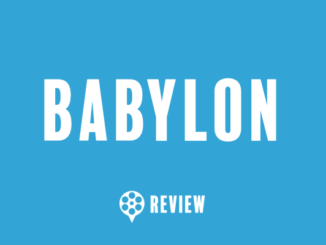When Go was released 20 years ago on April 9, 1999, I was 14 years old and enjoyed the film on the simplest of levels. It starred some of the hot teen stars of the time, it was rated-R & featured as hip of a soundtrack one could expect from 1999. The one statement that many people who were older than me were saying about the film was that it was “Pulp Fiction, for young people.” This was a statement I didn’t quite understand because I would see Pulp Fiction for the first time two years later (yep, I’m that guy that saw Quentin Tarantino’s Jackie Brown before Pulp Fiction) and the critique felt like a slight. Almost as if Go was a poor man’s Pulp Fiction.
The great thing about watching Go over the years is that, even with a full understanding of that statement now, the film is much more than that label. Stylistically there are similarities, and it features interconnected stories, but that’s where a lot of the comparisons should end. Released during the teen movie boom of 1999, Go stands out because it wasn’t like She’s All That, 10 Things I Hate About You or Never Been Kissed. It’s not a traditional teen movie, but still a portrait of youth culture that wasn’t explored this way. There was no high school angst or big revelations at the big school dance. These are characters in their early 20s who get caught up in one crazy night and the debauchery that ensues. I’ll say this, as I got older and came across some of these crazy nights myself, Go feels much more grounded in reality than you’d expect.
The genesis of Go is relatively simple. It’s a genre-bender that tells the same story from three different vantage points. On Christmas Eve, Ronna, a young grocery store clerk (Sarah Polley), tries to make her January rent by scoring some ecstasy for two soap-opera stars (Jay Mohr and Scott Wolf). Things go awry, as they so often do when drugs are involved, and everyone from a small-time dealer (Timothy Olyphant) to Ronna’s innocent friend (Katie Holmes) to a quartet of bros (among them, Taye Diggs and Breckin Meyer) get involved. There are car chases, shootouts, a threesome to boot but from start to finish, Go is wall to wall energy and allows you to forget how ridiculous it all is because it functions in a world where its tagline is its mantra: “life begins at 3 AM.”
The voice behind Go is its screenwriter John August, a then 20-something who wrote Go based on the employees who worked at his local Ralph’s supermarket and stories he had heard from friends:
“It’s fundamentally a story about what it’s like to be 20 years old. A bunch of wild stuff happens, but then at the end of the day, you pick yourself up, dust yourself off and go back to work. It’s very much of the age. All the things that happened in there, they aren’t things that happened to me, but they are carefully curated stories of things that happened to friends of mine. I don’t know any hit men in real life, but I know all these people in this movie.” – John August.
To create the film’s look, John August looked to then newcomer, Doug Liman. After viewing Doug Liman’s Swingers, John August and the producers felt the director would be the perfect fit, and Liman signed on soon after that. For all the comparisons to Tarantino, Go is pretty in line with the style Liman established with Swingers, particularly the portion of Go‘s story that takes place in Vegas.
The casting process for Go was relatively easy. August served as producer on the film and was heavily involved in the choices made for the roles. Sarah Polley was one of the few people who was just a flat-out offer. She was in Canada, and the only way they could get her was to offer her the role straight out, so she didn’t have to audition to play Ronna. The rest of the cast were a series of performers who just came in to read. Timothy Olyphant came in to read for Adam or Zack initially (roles that went to Scott Wolf and Jay Mohr) but it was clear to all involved, even Olyphant, that was much more of a Todd Gaines and he fell instantly into the role. Oddly enough, the actor was initially cast in Practical Magic but was fired from that film and was replaced by Aidan Quinn. This turn of events left him open to even be in Go.
Katie Holmes, who plays Claire in the film, had shot the pilot for Dawson’s Creek, but it hadn’t aired yet. The actress came in and auditioned, and Liman and August thought she was great. They knew to cast her was a real win when they witnessed her chemistry with Timothy Olyphant, and their scenes together became some of the highest testing moments at test screenings. Other performers, such as Taye Diggs, Breckin Meyer, Desmond Askew, were also actors who came in and auditioned and just felt right for their parts. Even Melissa McCarthy made her big screen debut in this film, playing a small role in a very memorable scene involved Adam and Zack.
Despite being an indie film, the movie carried a $5.5 million budget when is a bit unheard of for a perceived smaller film with no big-name stars. Right before Go went before the cameras, Columbia Pictures bought the film out. The project was in pre-production and about to start shooting when its foreign financing fell out because the movie didn’t have a bankable white male star. At that point, though, John August and all involved felt like they had a cast that was already really exciting. Katie Holmes wasn’t a star, but everyone thought she was on the verge of becoming a star. Scott Wolf was a star, in his own right, due to his role on the popular TV drama, Party of Five. People were also excited about Sarah Polley, who seemed to be the new indie darling. Due to this, Columbia stepped in and gave them the money necessary to make it but still treated the project like an indie film, which was the best situation for it. The studio embraced everyone’s creativity and just let them make their film.
Like most future cult classics, Go wasn’t a hit out of the gate at all. The film opened outside of the top five with a gross of $4.7 million and it ultimately only grossed $16.9 million by the end of its run. I think that, at the time, it appealed to such a niche audience that it didn’t allow the film to break out the way it probably should have, but I think that what helped Go endure after all of these years is that Go was very well-received by critics from day one.
The film carries a solid 91% fresh rating on Rotten Tomatoes, and many top critics praised it for its unique take on youth culture and exhilarating pace and style:
“Go is an entertaining, clever black comedy that takes place entirely in Tarantino-land…. Go has energy and wit, and the performances are right for the material.” – Roger Ebert
“Artfully executed druggy flights of fancy include a hallucinatory Macarena in a supermarket, a mind-reading black cat and a smart visual approximation of how it feels to be on the verge of throwing up. Here and elsewhere, Mr. Liman manipulates speed, light, editing, and point of view vigorously and keeps the radio humming. He creates a film that lives up to the momentum of its title and doesn’t really need much more.” – Janet Maslin (The New York Times)
In the years since its release, a few critics have even revisited the film:
“Few titles have the finesse, to sum up, a movie as brilliantly as Go, a drug-fueled rollercoaster ride that alternates between dark comedy and light suspense with terrific verve. The film’s appeal lies in its modest scale and the fact that it was made mostly by starving artist types. …Nearly everyone involved in the production was a relative unknown or comer. With no pressure to supply entertainment to the masses, the writer, director and most of the actors deliver the best work of their careers.” – Joe Valdez (The Distracted Globe)
“The split narrative style, complete with character title cards separating the film into thirds, put Go at the top of the list when it came too late ’90s Tarantino influenced cinema. And then there was director Doug Liman, red hot off of the cult success of Swingers, trading neo-swing culture for X and raves. (Both films would give a healthy chunk of attention to Vegas, though.) The thing about Go that sets it apart, however, is that it’s COMPLETELY FANTASTIC. Energetic and quotable and stylish and neither overly enamored with nor overly dismissive of the culture it’s inhabiting.”
There is an energy in Go that has allowed it to radiate for 20 years. The film may not be on the tip of everyone’s tongue, but sometimes I meet people who have seen it, and we bound over its over the top moments, wickedly smart dialogue, and stylish direction. Some may say it’s the “junior Pulp Fiction,” but real fans know it’s in a league of its own and definitely one of the most unique youth centered films to come out during a crowded, but entertaining period.




